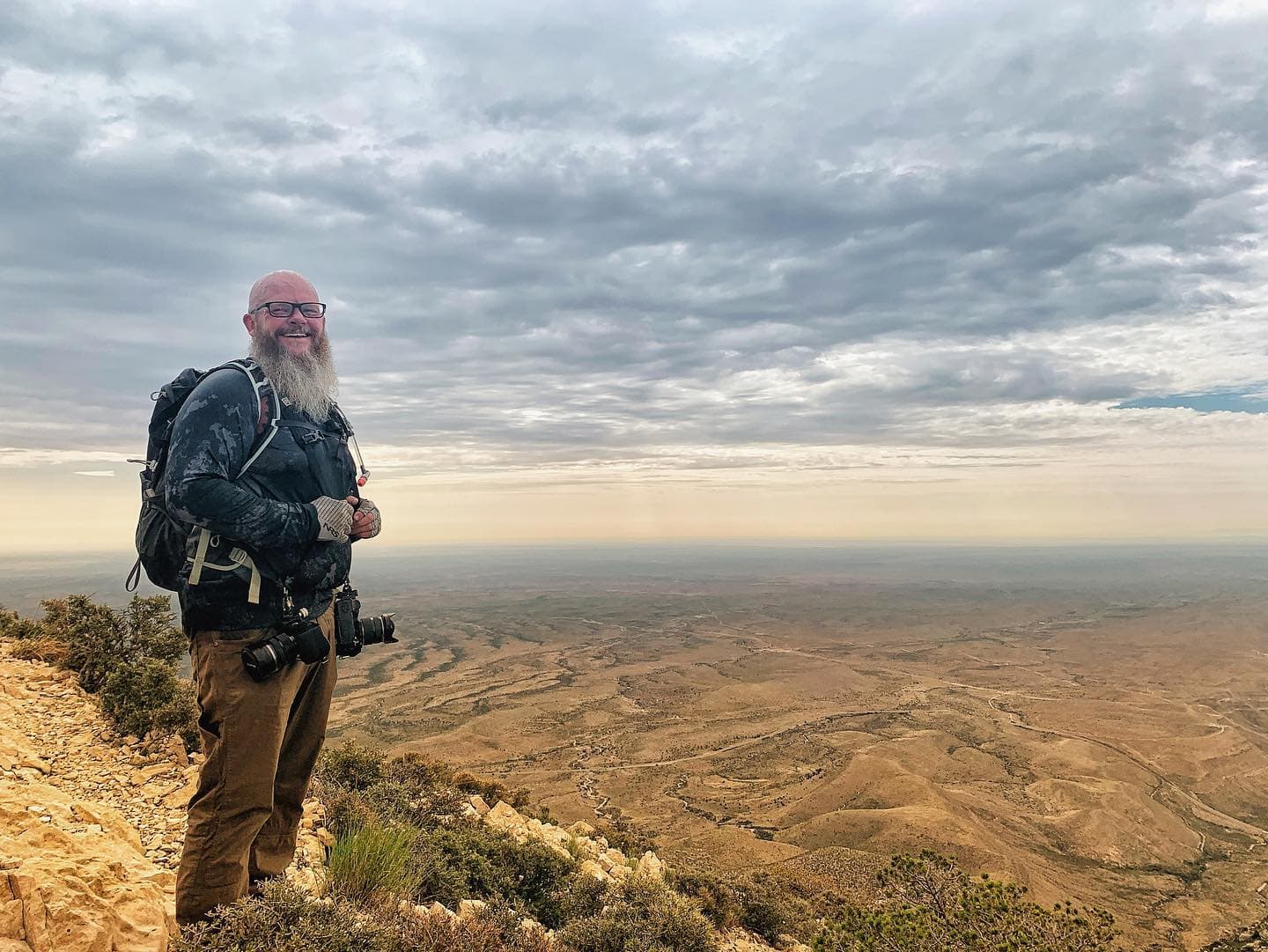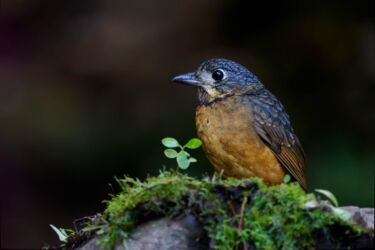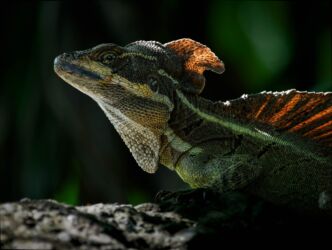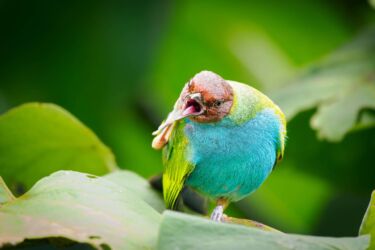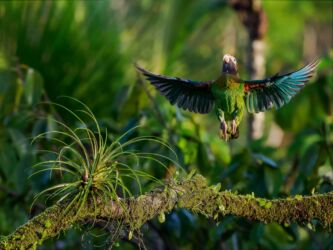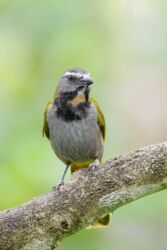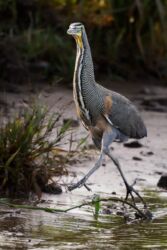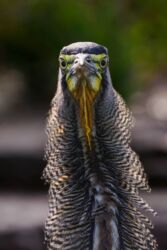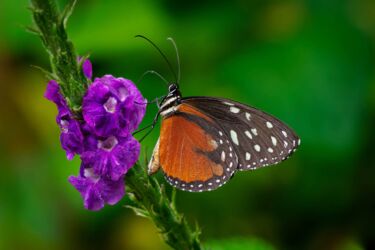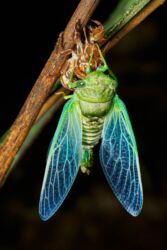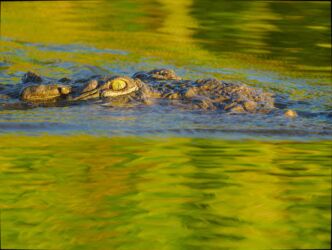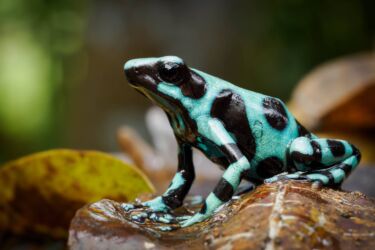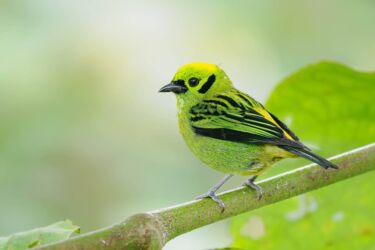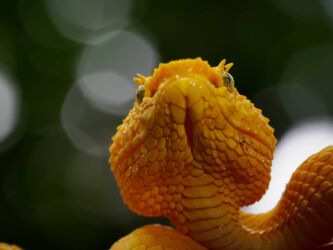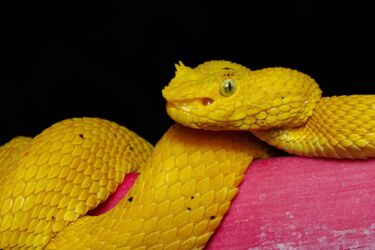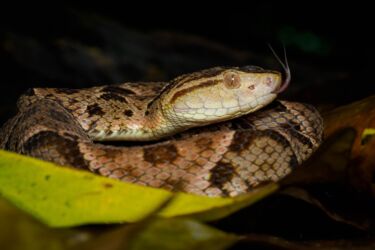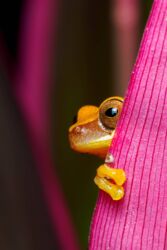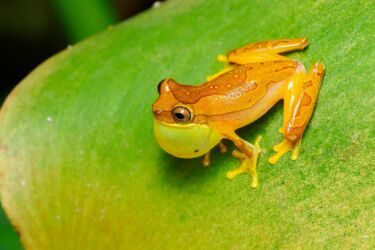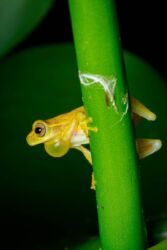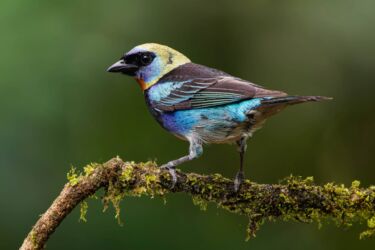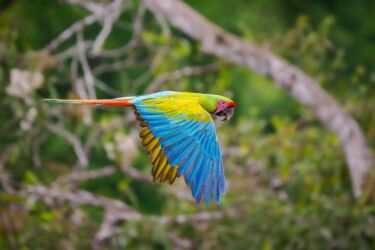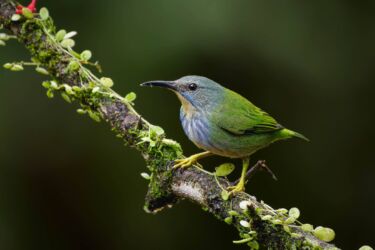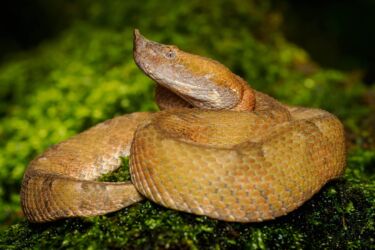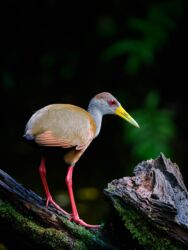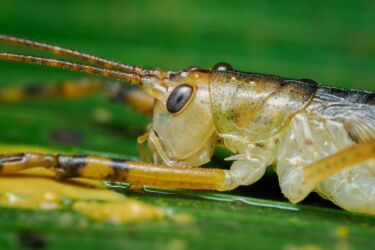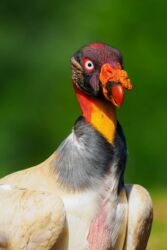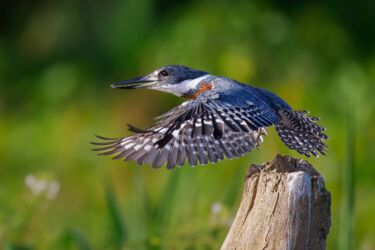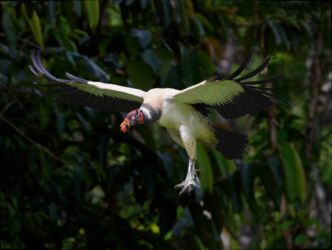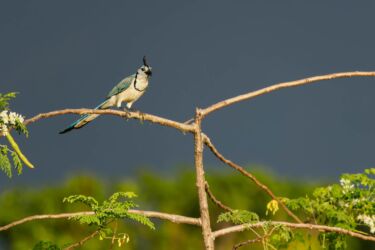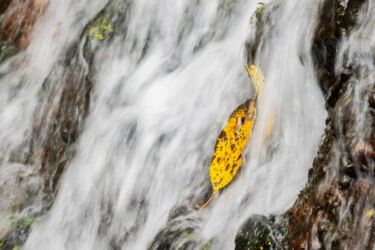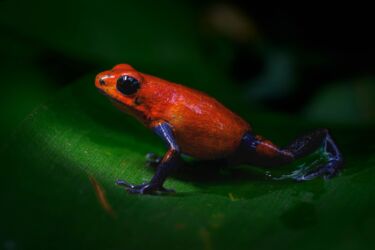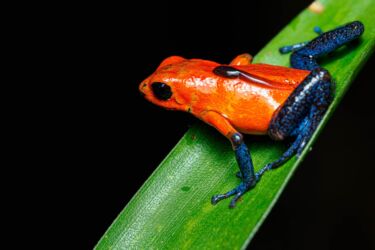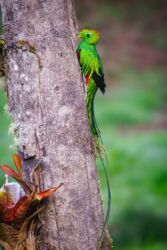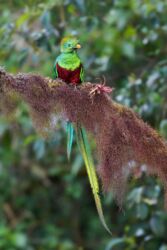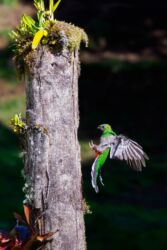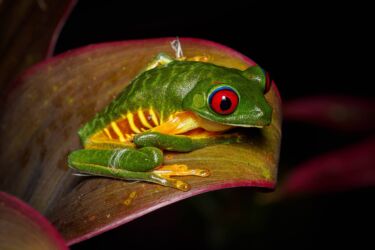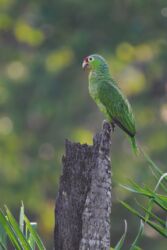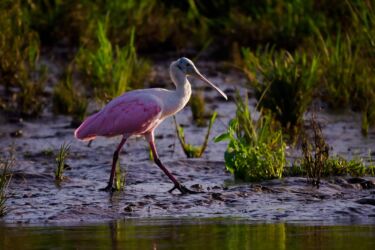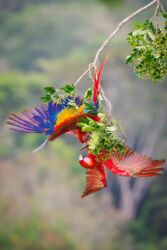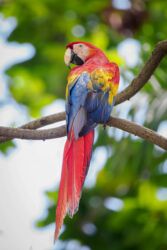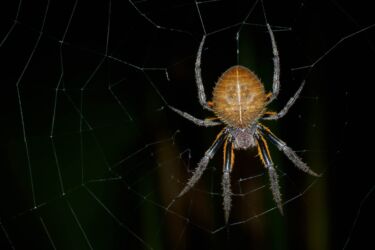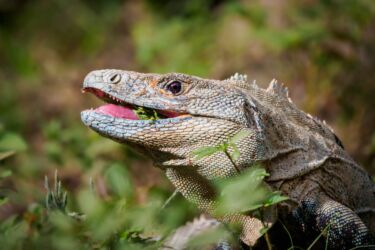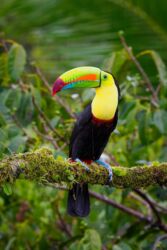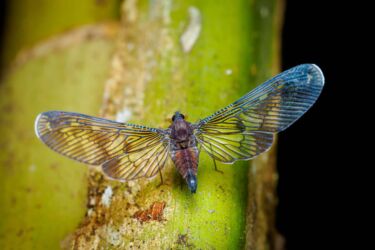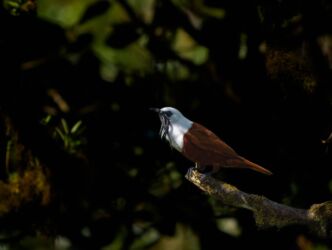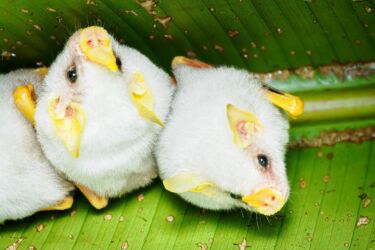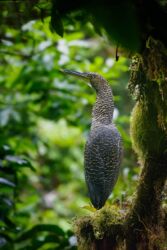TRIP REPORT: COSTA RICA: 2023 Birds & Wildlife Photography Workshop
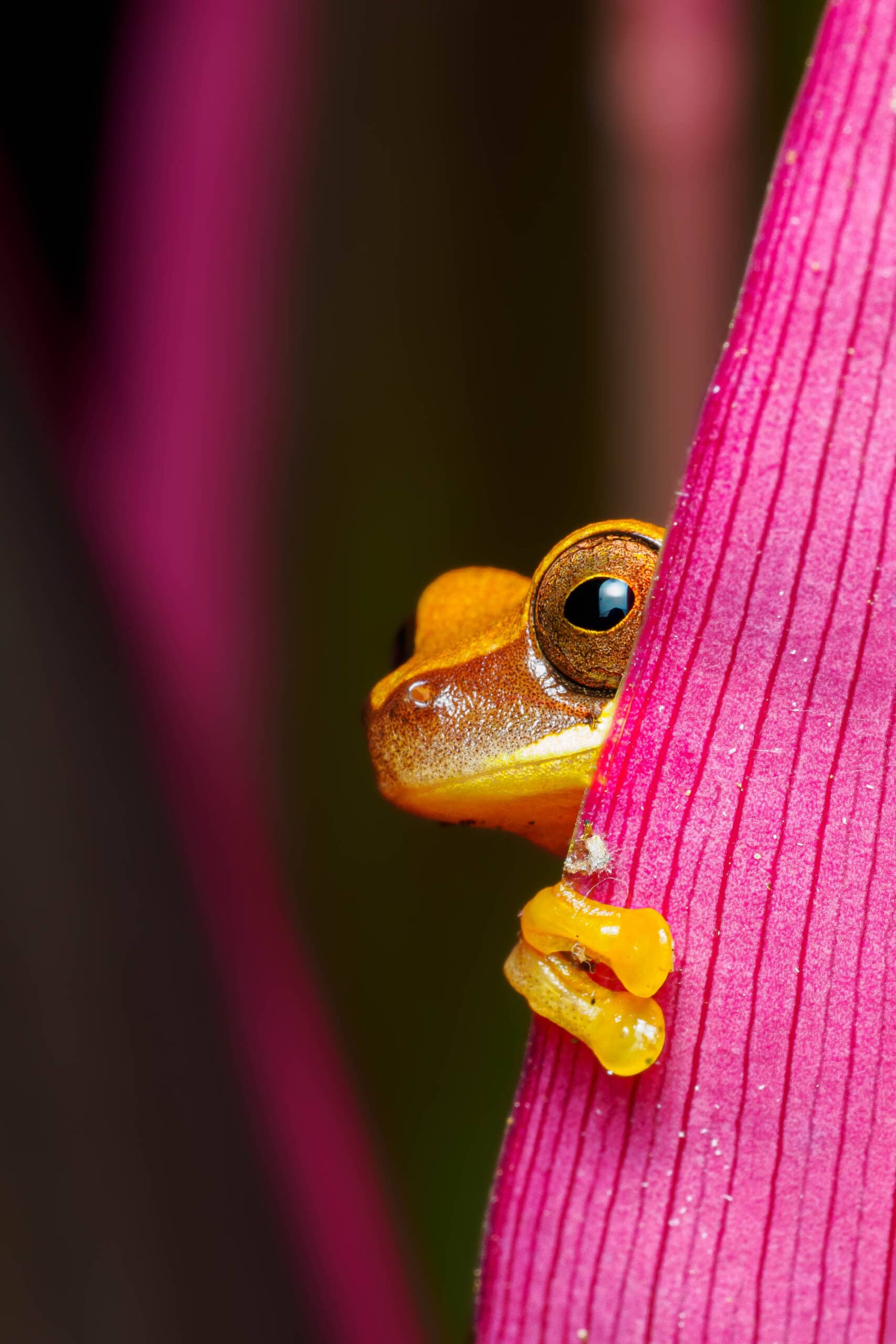
TOUR FOCUS
TRIP LEADERS
PRIVATE TOUR OPTION
This tour is available as a private trip for any size group. The tour cost will vary with the number of people and any custom requests.
TESTIMONIALS
2023 Costa Rica: Birds & Wildlife Photography Workshop
Trip Report
The 2023 Costa Rica: Birds & Wildlife Photography Workshop just concluded and this year’s workshop was stellar with some incredible photographic opportunities and life long memories. This was a new itinerary with a new local guide and with even more days in country and more productive locations! The group journeyed to both the pacific and Caribbean sides of the country producing a tremendous variety of birds, reptiles, amphibians, and insects. Bird and macro photography kept us busy from well before sunrise to after sunset with several night macro photography walks.
Our workshop began by staying the first night near San Jose at a wonderful boutique hotel with beautiful grounds that provided some great bird and macro photographic subjects. Orange-chinned parakeets foraged, a variegated squirrel scurried around our rooms with a beautiful grey head and reddish body, several species of butterflies and orchids drew our macro lenses’ attention, and a pair of active rufus-naped wrens hopped about in search of food near the dining area. A long travel day for most meant we got to bed early to prepare for our departure to the coast on the pacific slope side of Costa Rica.
Our destination for the day would be Hotel Villa Lapas, our base for two nights of exploring the Rio Tarcolitos region. However, before reaching our destination, we took a side trip down a dirt road and it wasn’t long before our group was photographing not one, but two turquoise-browed motmots. The pair was a great introduction to the beautiful birds of Costa Rica. A short walk produced a nesting pair of Hoffmann’s woodpeckers squawking at us and allowing us to photograph them at their nest entrance. We searched for the limited range stripe-headed sparrow only to be skunked; yet this was temporary as we would find several the following day.
Our temporary lack of the sparrow was soon alleviated by a male and female barred antshrike that kept our attention for quite some time. We continued walking down this fantastic side road with a plethora of birds such as collared trogon, more rufus-naped wrens, some wintering birds that will soon be migrating to the US, and much more. A short drive down the same road produced the unique and fun to photograph double-striped thick-knee. Before reaching our lodge, we stopped to photograph a nesting pair of scarlet macaws. This was an exciting observation as both birds exited the nest and perched nearby affording outstanding views and resulting in a variety of amazing images. A short jaunt further found us at our first lodge of the trip.

Scarlet Macaw
We spent the afternoon wandering the grounds of the lodge which yielded a brown basilisk catching a bit of back lighting that highlighted the awesome crest on the male. His eyes reflected the surrounding forest and we photographed him as the light shifted and changed. Basking spiny-tailed iguanas, bare-throated tiger herons, buff-rumped warbler, and many other amazing tropical birds caught our attention.

Brown Basilisk
The lodge had a sign listing the reptiles and amphibians found on the grounds and a nice decorative pond would reveal the glistening frogs and toads after the sun descended below the horizon. I grabbed a bird-eating snake as it went up a tree but we were headed for dinner so I let it be to hunt for prey.
After dinner, I grabbed the new M.Zuiko 90mm F3.5 MACRO IS PRO lens, the OM-1 body, the new AK Diffuser made specifically for this lens and the OM System FL-700WR Flash. I quickly found a red-eyed tree frog resting on a leaf over the pond. This is the pacific form of this species with a different colored side from those on the Caribbean side. Being a bit too far out for great images, I relocated the frog to a closer leaf and it cooperated for many photographers including other tourists at the lodge who diligently took their iPhone images after we had shot our fill.
Harlequin and yellow tree frogs, smaller than the prior mentioned species, called and perched at various locations throughout the pond. We relished the many opportunities to photograph these beautiful amphibians. You can see from the images that the 90mm provides not only incredible images, but the extra working distance over the 60mm macro means spooking fewer subjects. Walking around the gardens at night, I found some beautiful foliage hosting additional frogs and this resulted in a yellow tree frog peeking around some lovely pinkish-red foliage. I set my flash exposure compensation to +0.7 and captured many images.

Red-eyed Tree Frog
When photographing small subjects, it is equally important to consider the background and moving ever so slightly can make your macro subject stand out in the image. Angles are critical when looking to capture an insect, reptile, amphibian, or other macro subject. Sometimes it just isn’t possible to get the desired angle due to foliage, obstacles, or possibly spooking the subject. The macro photographer has to recognize situations where we are going to enjoy the subject, but not be able to capture a great image. It is occasionally possible to use your hand to guide a subject into a better angle or position, but we must always put our safety and the subject’s well-being at the forefront. Knowing we had an early start the following day, we opted to end our night on a high note after seeing and photographing seven (7) species of frogs.
The next morning we departed early for a river boat photography ride on the Rio Tacrolitos! Simply put, the photography was rip roaring and we barely had time to rest between subjects as we were immediately distracted upon pushing away from the dock by an American crocodile that was swimming toward our boat. The angle of his swimming was going to put him right alongside the vessel. I dropped to the lowest possible location at the front of the boat and photographed the crocodile as it rose and sank in the water as this amazing reptilian beast cruised easily alongside us, I watched as the color of the river changed from brown, to green, or clear. Capturing a variety of images allowed me to select an image with my favorite background color. You can see below how the different water colors affected the final image. Which one is your favorite? Mine is the bright green one.

Clear/White Background

Dark Green Background

Bright Green Background
It wasn’t long before other subjects captured our attention with some of the most memorable being a bare-throated tiger heron that allowed us to approach closely and then ultimately ran at us as we sat on the riverbank! At one point, this heron approached within ten (10’) feet of our boat. Everyone captured a ridiculous number of images including head portraits, action shots, and standard portraits. The bird was backlit at times and the feathers around the head glowed in the early morning light. Kingfishers lifting off their perches, a cooperative female anhinga, muscovy ducks flying up and down river, yellow-headed caracaras, and a turquoise-browned motmot all vied for our attention.

Bare-throated Tiger Heron Running at the Boat
In the afternoon, we returned to the same area to photograph a Costa Rican pygmy owl, our first, but not last of the trip. While we were watching the owl, a spiny-tailed iguana descended from a nearby tree and began foraging at our feet! Check out the chompers on the fellow below! After the pygmy owl, we drove a brief distance to see and photography black-and-white owls. This is when local guides are critical to your experience! It was amazing how quickly the local guide got us on both owls! Knowing we had a very early departure the next morning, we opted to forgo a nighttime macro walk.

Spiny-tailed Iguana
As we left the Rio Tarcolitos region early the next morning, we began the drive into the northern foothills where the Maquenque Lodge would be our home base. But before arriving, we picked up a local birding guide who would direct us to a spectacular and secret location for three-wattled bellbird! This is a bird usually reserved for extremely distant views through spotting scopes. Patience would win the day as we moved from a couple of locations following the male bird until he began to lek in dappled light at eye level! We observed this amazing experience and photographed to our heart’s content. Waiting for the bird’s head to appear in the small amount of light filtering through the tree’s was a photographic challenge and it paid off! The entire group was mesmerized by this natural behavior and to see and photograph it at eye level turned out to be the favorite moment of the entire trip for most of our participants, including myself!

Three-wattled Bellbird on Lek
A stop for lunch at mid-elevation provided some unique tanagers that weren’t found at other destinations such as bay-headed and emerald tanagers. After a bit of time dodging cruise ship iPhone photographers, we managed to photograph many wonderful birds before boarding our bus for Maquenque Lodge which is a different kind of lodging adventure as no road connects to the lodge! A brief boat ride across the Rio San Carlos and then a brief hike led us through the beautiful grounds and by a white-collared manakin’s lek! As you arrive to the reception area, you are greeted by beautiful buildings with an open air dining area right next to some great perches where toucans, aracaris, tityras, parrots, and much more would land before dining on fruit! Photographing right next to your dining table is a great experience!
Making the way to our cabins nestled into the surrounding forest, the flowers and vegetation are immersive and relaxing! The afternoon was spent enjoying the feeders near the lodge and exploring the surrounding forest. That evening provided some incredible macro opportunities with at least three (3) species of tarantula, many emerging cicadas and katydids, a four-eyed opossum wandered down the path scurrying up a nearby tree, and sleeping anoles.

Emerging Cicada
The next morning found us taking a short drive to a nearby lodge for some spectacular encounters with king vultures, toucans, and a brown-hooded parrots flying right by the deck. Nesting Costa Rican pygmy owl and red-lored parrots near the deck provided some very unique photographic encounters. The king vulture blind proved to be all that was anticipated and more! Photographing these majestic birds so close that you could capture head portraits, as well as, in flight shots, all while the light alternated from very soft to dappled.
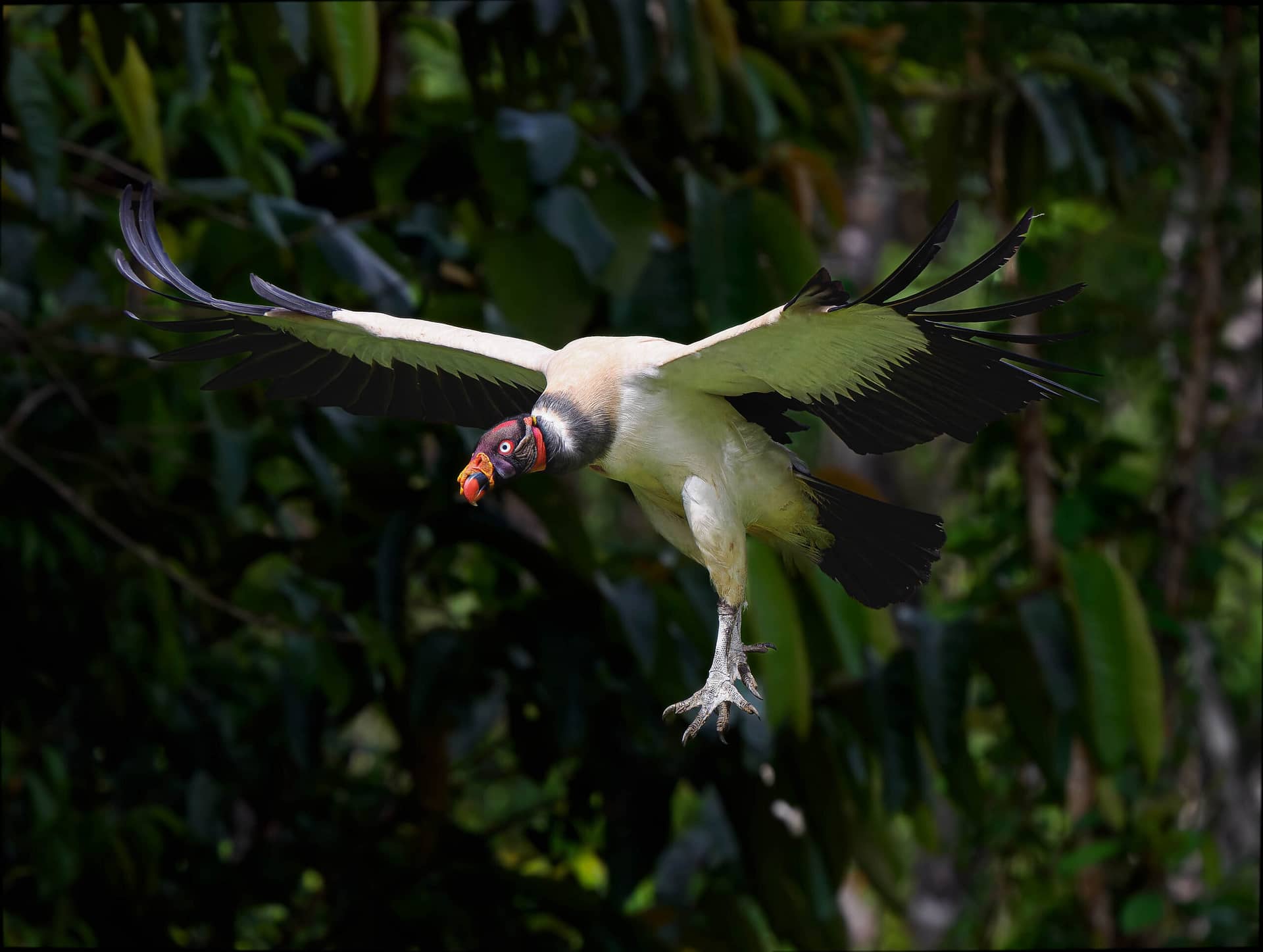
King Vulture in Flight
After spending a full morning at the vulture blind, we went back to the lodge and the pygmy owls had exited the nest cavity,. One spent a lot of time preening in the open on a lovely perch. After a wonderful lunch, we made our way to a local home where high speed hummingbird photography kept us quite busy as well as a local bull that loved eating bananas! Another evening macro adventure found us laying down to photograph a spider with prey, a new tree frog species (new to us anyways), a variety of katydids and crickets, and a cockroach with a very cool pattern on the ventral surface.
A leisurely start the next morning, we made our way back to the same local home we visited the day prior to photograph several species of local reptiles and amphibians. Poison dart frogs (Oophaga pumilio “blue jeans”, red-eyed tree frog (pacific form), eye-lash tree viper, fer-de-lance, hognose viper, and several other species allowed us to capture natural light and fill flash images. The handlers were outstanding and helped us capture the images we wanted! We spent a great deal of time working angles, lighting, and subjects. Once we finished our macro session, we headed out to a lodge to check out the blinds and rooms, plus enjoy a delightful lunch.

Eyelash Viper
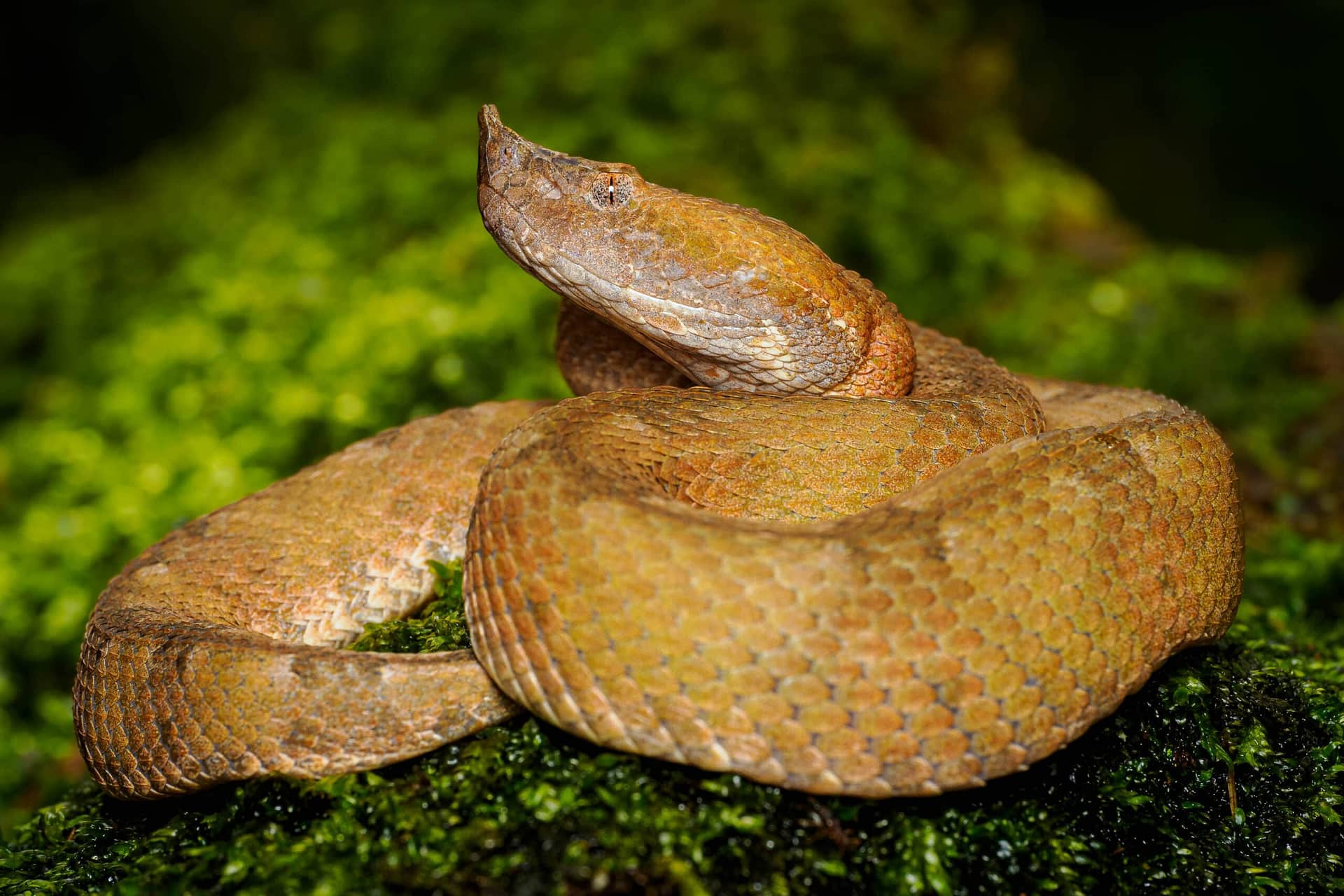
Hognose Viper
Little did we know how fortuitous this stop would prove when several giant green macaws landed in trees next to the dining area. Patience paid off and we were rewarded with one flying down just below eye level to feed and ultimately taking off from that area providing some outstanding flight images. Shortly thereafter, two scarlet macaws raised a full blown four alarm ruckus while arguing over foraging area. We captured many images as they pushed, bit, clung, and wrestled with one another. When the activity finally settled, we headed back to finish our delicious lunch before departing for our next location.
It was time to begin the journey to our next destination, Selva Verde Lodge. This lodge is situated on the Caribbean side of Costa Rica. After our later arrival and some intermittent showers, we were able to get out for some incredible night exploration which was quite fruitful with many more emerging cicadas, a spectacular Halloween colored spider, red-eyed tree frogs (Caribbean form), katydids, sleeping lizards, and damselflies. The following morning found us heading out to a local home where the artist/owner has developed an outstanding bird blind and is quite knowledgeable of the local forest where a wonderful hike uncovered Honduran white bats, a toucan in the nest cavity, two species of owls, and a poison dart frog carrying one of it’s tadpoles on its back!
Eventually, we began a drive into the higher elevations to Suenos del Bosque Lodge located in a beautiful valley where the mascot for the valley is the spectacular resplendent quetzal. The drive up provides some spectacular scenery and a winding mountain road drops back down to our home base for the next few days. Lunch found us at a local diner with some great food and beautiful hummingbirds and a Northern Emerald Toucanet made an appearance!
After arrival at our lodge, we spent time wandering the grounds and exploring the suspension bridge and the trail that follows a lovely, small mountain stream. Taking a bit of an afternoon siesta after some very long days in the field, we prepared for an early morning departure to a local home where quetzals had built a nest in a broken trunk near the home.
Nature photographers consider the resplendent quetzal as a sort of holy grail subject in the bird kingdom. We arrived at the viewing area and waited in anticipation for the male to exit the nest. It was evident that he was on the nest as his long, delightfully colored tail was sticking out of the nest.
Quetzals can’t be gone from their nest for long, so exits are few and far between normally occurring when the female or male return to the nest to relieve their partner. However, a clay-colored thrush wandered too close to the nest for the male’s comfort and he exited to chase the thrush well away from the nest. He then proceeded to perch on a lovely branch near the nest providing some wonderful portrait shots. After a brief repose, he opted to return to the nest and photographer’s setup to hopefully capture the male exiting the nest. I opted to change to the SH2 drive mode on the OM System OM-1 which offers 50 fps and I was able to capture several amazing images when the male exited once again. Knowing the female quetzal was perched in a nearby tree, we set up on the nest cavity and waited. Continuing to use the 50 fps drive mode allowed me to capture several excellent images of her flight back to the nest cavity.

Resplendent Quetzal – Male

Resplendent Quetzal – Female
Having seen and photographed both of the male and female quetzals, our group opted to head to another nearby lodge for more high-speed hummingbird photography and to wander the beautiful grounds photographing high elevation species. After a delicious lunch and having an early start to the day, it was time to head back down the valley to our lodge. However, our local guide mentioned that within a short drive we could easily be hiking above tree line searching for the extremely limited range volcano junco! The group decided to pursue the junco so we began the short drive. Upon arriving at an elevation of 11,445’ we exited the bus and began our search. After a bit of fruitless searching, we eventually got killer looks and some images of the junco as well as a nearby flame-throated warbler.
After our time up high, we began the drive back to our lodge where the afternoon provided some relaxing hiking and photographing on the lodge grounds.
The next day we headed a short ways back up the valley to Batsu Gardens where a bird blind with a spectacular view beckons the observant nature photographer. We were greeted by a male and juvenile green spiny lizard. The male’s colors are vibrant and make for outstanding nature images. White-throated mountain gems, volcano, Talamanca, and other hummingbird species make for exciting high-speed and natural light photography. After photographing to our heart’s content, we headed down to the restaurant at Batsu which is renowned in Costa Rica (the group decided we needed to enjoy dinner at this location as well).
After arriving back at the lodge, we headed out on foot to photograph along the river and trails on nearby accessible property. We encountered a mixed flock of collared redstarts, ruddy treerunner, flame-throated warblers, yellow-winged vireos, and others. We worked this flock for a while and then continued down the trail, upon doubling back our driver who was on his first bird photography tour and really took to enjoying the wildlife found a fascinated tiger heron! This bird, described by the driver as a weird duck, was in a beautiful location with some inserting light.

Fasciated Tiger Heron
Happy with our driver’s bird spotting ability and subsequent images, we head back to the lodge but not before being distracted by torrent tyrannulets feeding along the river. Knowing we had an early start the following morning to explore a new destination which was known for scaled antpitta, white-bellied mountain gems, and other great birds, we opted to turn in a bit earlier fort the night.
Early the following morning, our bus rumbled back up the valley in the dark. After a couple of hours of spectacular mountain scenery, our group unloaded and headed to the location where the owner had been feeding a scaled antpitta for several years. While we arrived in the morning, the bird was known to be more predictable in the late afternoon. The owner placed some worms and did his normal routine to attract the antpitta. Despite his persistence, the bird failed to show.
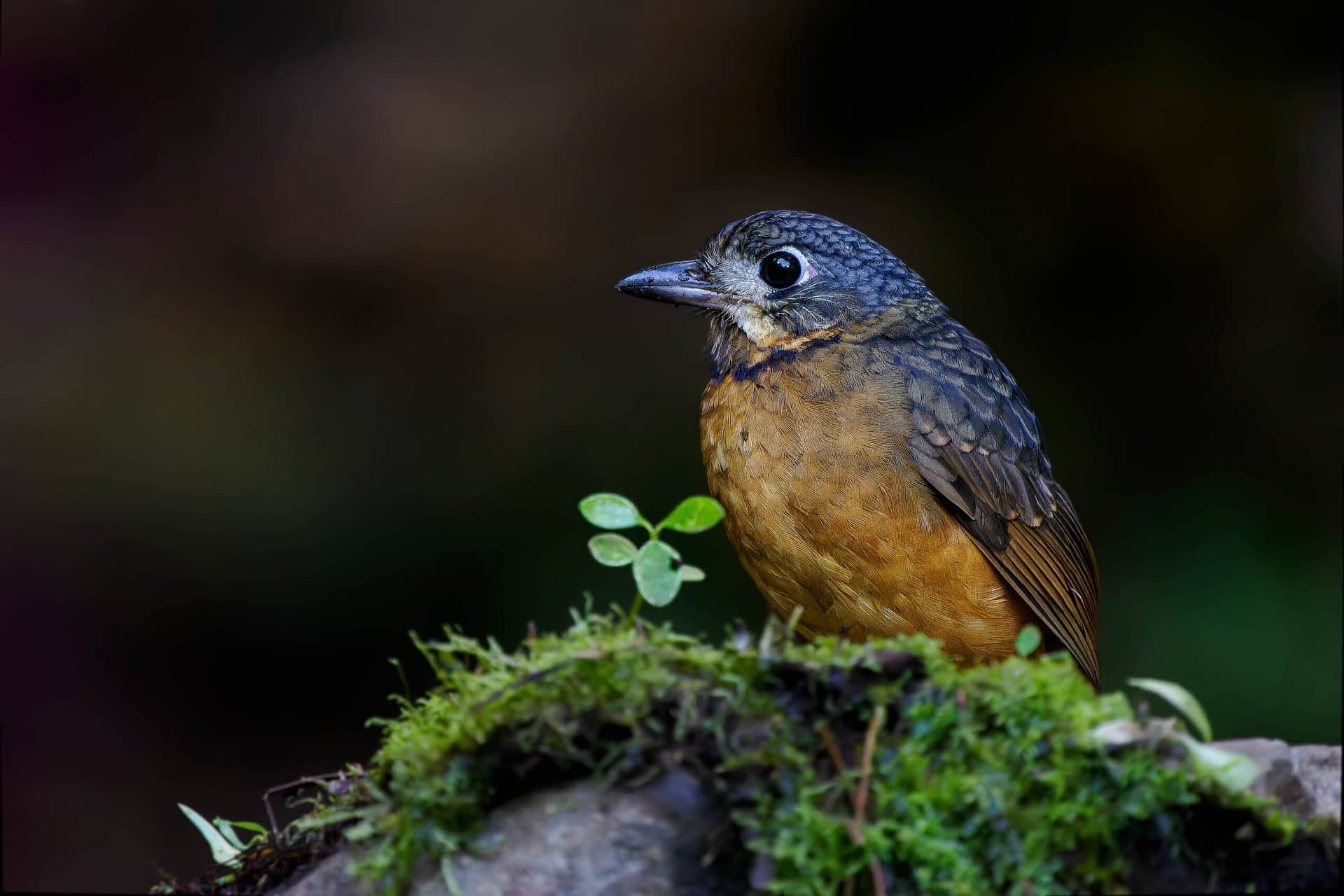
Scaled Antpitta
There remained one surprise on the grounds of the Bougainville Hotel in San Jose with a Mottled Owl in plain sight which all participants greedily photographed before our farewell dinner. 2023 was full of amazing photographic experiences, many of which we did not have on our last workshop! The new itinerary, local guide, and driver all proved a boon to our photographic endeavors! Make plans to join us in 2024!
TRIP GALLERY

